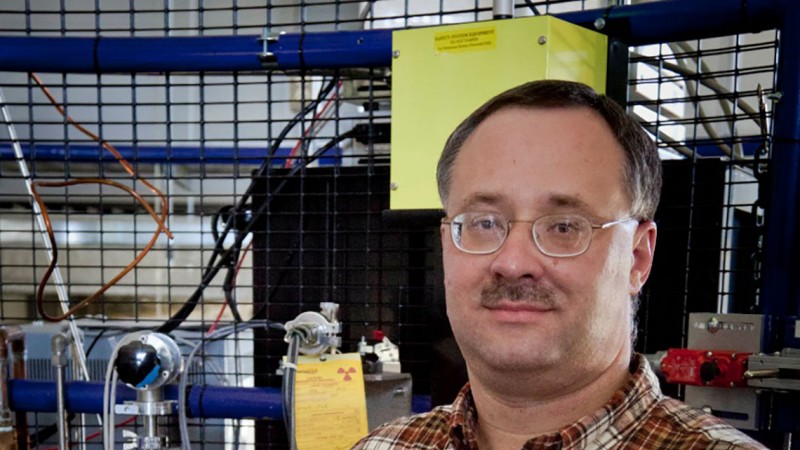Studying biosamples at supercold temperatures, such as 200 Kelvin (-73.15°C), has been impossible in the past, as the water in such solutions inevitably freezes, and with it, the biosample's dynamic interactions. How to keep biosamples from freezing at very low temperatures has been an ongoing research problem—until now.
Eugene Mamontov, lead instrument scientist on the BASIS Backscattering Spectrometer at the Spallation Neutron Source and former postdoctoal student Xiang-Qiang Chu have successfully developed a method to study such biomolecules (proteins) at temperatures far below freezing using aqueous solutions of lithium chloride as a protein solvent that actually prevents the protein solutions from freezing. With lithium chloride, this goal is achieved without resorting to cryo-protectants, such as glycerol, which drastically alter the dynamics of the protein and its solvent.
Mamontov and Chu discovered that although lithium chloride aqueous solutions are remarkably similar to water, unlike water they do not freeze below 200 Kelvin. This discovery allows researchers to study the dynamic interaction of proteins and their aqueous solvent at very low temperatures, elucidating their vibrational behavior at the atomic level. Then, while slowly raising the temperature to physiological conditions, scientists can study the unique biological "relaxational" motions that dominate as the temperature is raised. Quasi-elastic neutron scattering can literally snap pictures as the dynamic interactions of the sample and water gradually "switch on" with the rise in temperature.
Research conducted at the Spallation Neutron Source was funded by the U.S. Department of Energy Office of Basic Energy Sciences.
Published Work
Eugene Mamontov and Xiang-qiang Chu, "Water-protein dynamic coupling and new opportunities for probing it at low to physiological temperatures in aqueous solutions," Phys. Chem. Chem. Phys. 14, 11573-11588 (2012); DOI: 10.1039/c2cp41443k.






